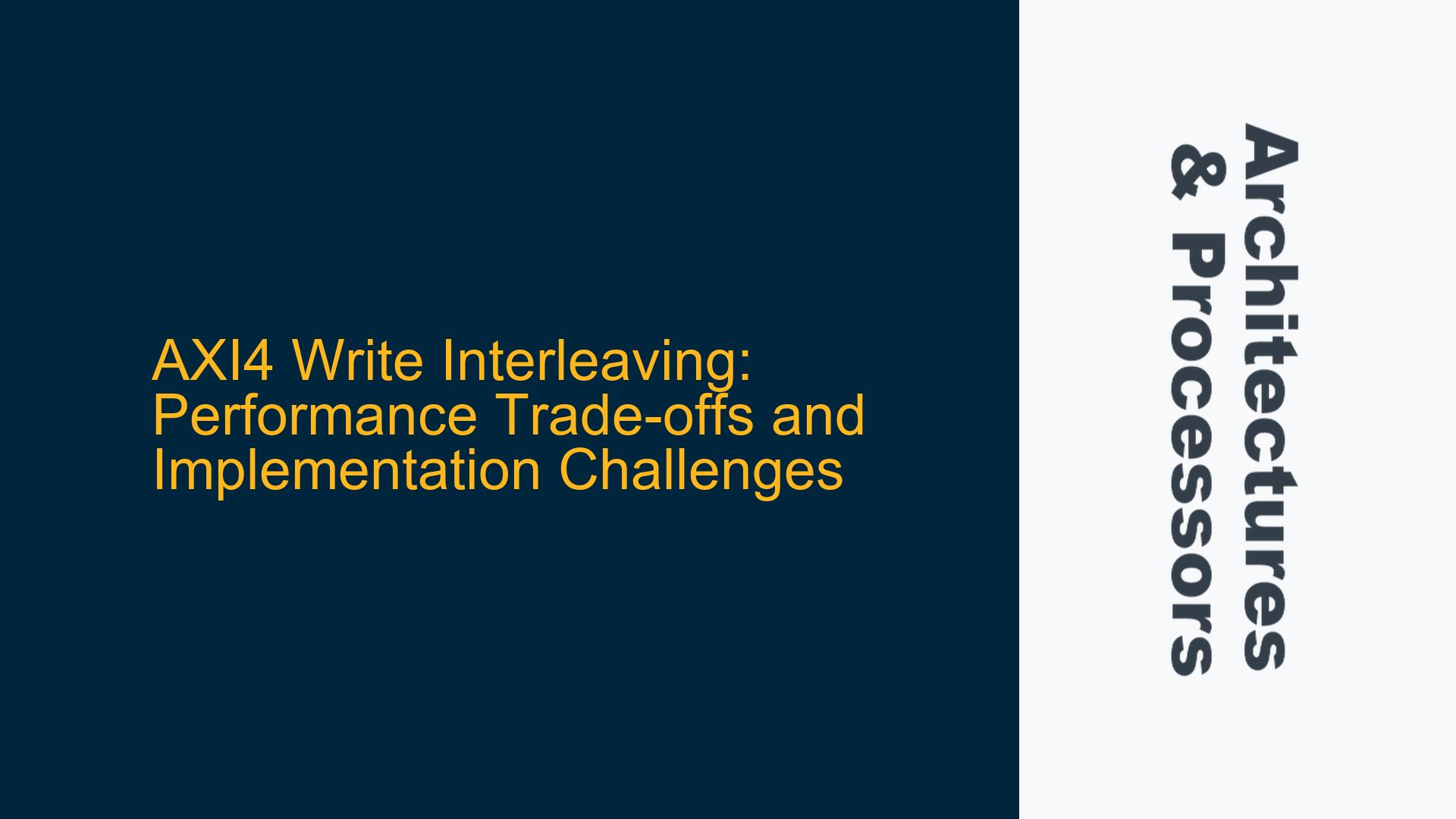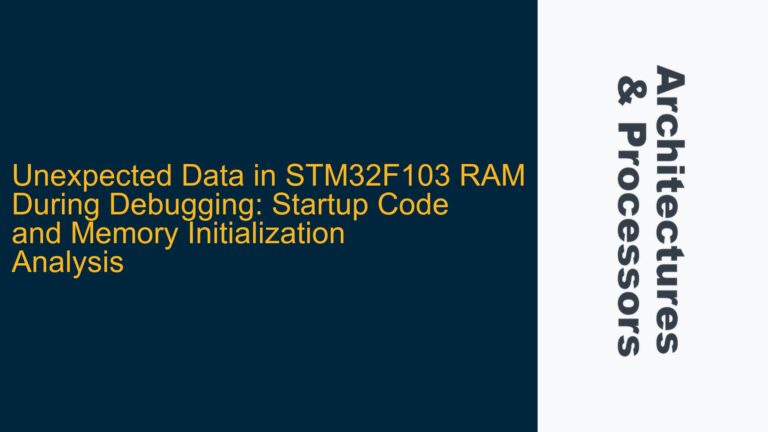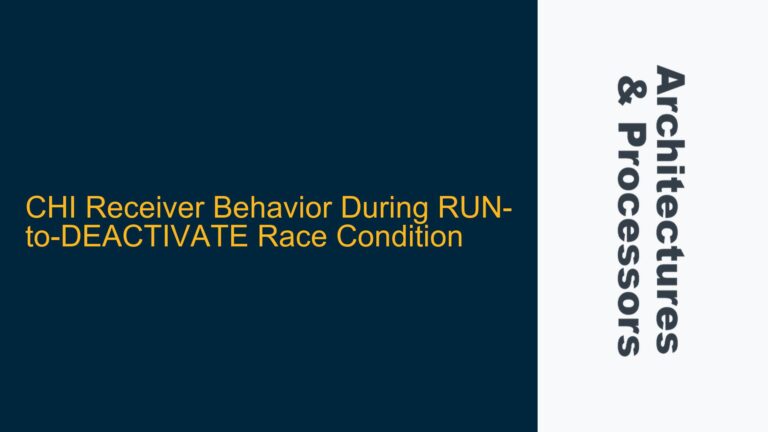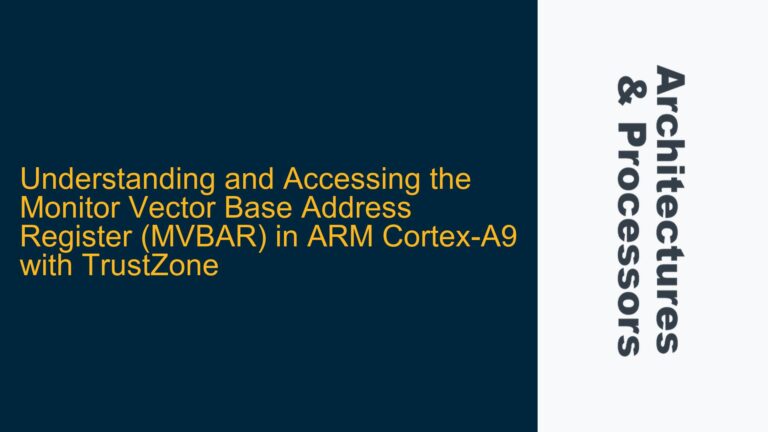AXI4 Protocol Write Interleaving Removal and Its Impact on Bus Throughput
The AXI4 protocol, a cornerstone of modern ARM-based systems, explicitly removed support for write interleaving, a feature present in its predecessor, AXI3. Write interleaving allowed multiple write transactions from different masters to be interleaved at the data phase, enabling higher bus utilization in scenarios where masters had varying transmission speeds. However, this feature was deemed too complex and resource-intensive to implement in AXI4, leading to its removal. The absence of write interleaving can result in interconnect congestion when multiple masters attempt simultaneous write transactions, particularly in heterogeneous systems where masters operate at different speeds. This congestion manifests as reduced bus throughput, especially in systems with high data transfer demands.
The primary reason for removing write interleaving lies in the complexity it introduces to the interconnect and subordinate designs. In AXI4, write transactions are now strictly sequential, meaning that all write data for a given transaction must be transmitted contiguously before the next transaction’s data can begin. This simplifies the routing and buffering requirements for both the interconnect and the subordinates but comes at the cost of potential performance degradation in certain scenarios. For example, if a slow master initiates a write transaction, it can block faster masters from accessing the bus until its transaction completes, leading to inefficiencies.
The impact of this design choice is particularly pronounced in systems with high-performance peripherals, such as GPUs or DMA controllers, which rely on low-latency, high-throughput data transfers. Without write interleaving, these peripherals may experience increased latency and reduced effective bandwidth, especially when competing with slower masters on the same interconnect. This trade-off between implementation complexity and performance is a critical consideration for system architects designing ARM-based systems.
Complexity of Routing and Buffering in Write Interleaving Implementations
The removal of write interleaving in AXI4 was driven by the significant complexity it introduced to the interconnect and subordinate designs. One of the primary challenges lies in the routing of write data through the interconnect. In a system supporting write interleaving, the interconnect must maintain a lookup structure to track all outstanding write transactions and ensure that the correct data is routed to the appropriate subordinate. This lookup structure must account for the possibility of multiple transactions using the same AWID (Write Address ID), further complicating the design.
For example, consider a system with two masters, Master A and Master B, both initiating write transactions to different subordinates. If write interleaving is supported, the interconnect must decode the AW requests from both masters and maintain separate buffers for each transaction’s write data. This requires a complex routing block capable of handling multiple outstanding transactions simultaneously, including those with identical AWIDs. The interconnect must also ensure that the write data is correctly interleaved and delivered to the appropriate subordinate in the correct order.
In contrast, without write interleaving, the interconnect can simply use a FIFO (First-In-First-Out) structure to store routing information. Since write data is guaranteed to arrive in the same order as the requests, the interconnect does not need to maintain a complex lookup structure or handle interleaved data. This simplification significantly reduces the design complexity and resource requirements for the interconnect, making it easier to implement and verify.
Another challenge arises at the subordinate level. Subordinates, such as memory controllers or peripheral registers, often perform more efficiently when they can process entire write transactions in a contiguous manner. If write data arrives interleaved, the subordinate may need to buffer multiple transactions’ worth of data to maintain efficiency. This buffering requirement increases the complexity and resource usage of the subordinate, as it must be capable of handling fragmented write data and reassembling it into complete transactions.
Without write interleaving, subordinates can assume that all write data for a given transaction will arrive contiguously, simplifying their design. They can process each transaction as a single, uninterrupted block of data, reducing the need for complex buffering and reassembly logic. This simplification is particularly beneficial for high-performance subordinates, such as DDR memory controllers, which rely on efficient data handling to achieve maximum throughput.
Optimizing AXI4 Systems for Write Transaction Efficiency
To mitigate the performance impact of removing write interleaving in AXI4, system architects can employ several strategies to optimize write transaction efficiency. One approach is to carefully design the interconnect and subordinate interfaces to minimize latency and maximize throughput. This can be achieved by implementing advanced arbitration schemes that prioritize high-performance masters, ensuring that slower masters do not unduly block the bus.
For example, a weighted round-robin arbitration scheme can be used to allocate more bus bandwidth to high-performance masters, such as GPUs or DMA controllers, while still allowing slower masters to complete their transactions. This approach helps to balance the needs of different masters and reduces the likelihood of interconnect congestion. Additionally, the use of multiple AXI channels can help to parallelize write transactions, further improving bus utilization.
Another strategy is to optimize the buffering and data handling capabilities of subordinates to minimize the impact of sequential write transactions. Subordinates can be designed with larger internal buffers to accommodate multiple outstanding write transactions, reducing the need for frequent handshaking and improving overall efficiency. For example, a DDR memory controller could be designed with a deep write buffer, allowing it to accept multiple write transactions in quick succession and process them in parallel.
System architects can also leverage the AXI4 protocol’s support for out-of-order transaction completion to improve performance. By allowing read and write transactions to complete in a different order than they were issued, the system can achieve higher throughput and lower latency. This is particularly useful in systems with multiple masters and subordinates, where the order of transaction completion may not be critical.
Finally, the use of advanced debugging and profiling tools can help to identify and address performance bottlenecks in AXI4 systems. Tools such as ARM’s CoreSight and DS-5 Development Studio provide detailed insights into bus activity, allowing system architects to analyze the performance of individual masters and subordinates and identify areas for improvement. By carefully tuning the system design and addressing any identified bottlenecks, it is possible to achieve high levels of performance even without write interleaving.
In conclusion, while the removal of write interleaving in AXI4 introduces certain performance challenges, these can be mitigated through careful system design and optimization. By understanding the trade-offs involved and employing appropriate strategies, system architects can achieve efficient and high-performance AXI4-based systems.






